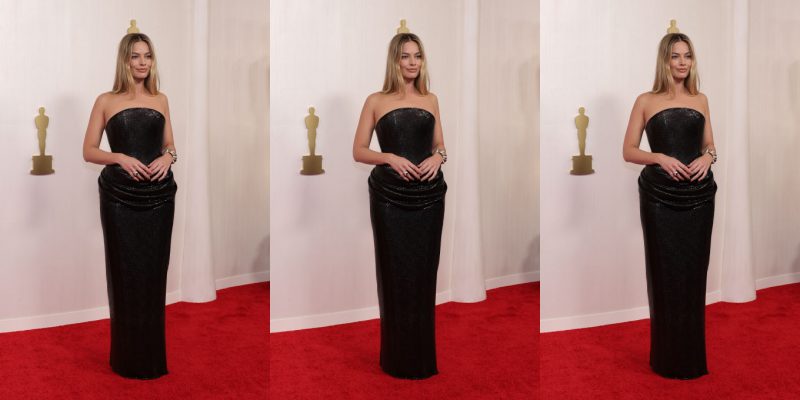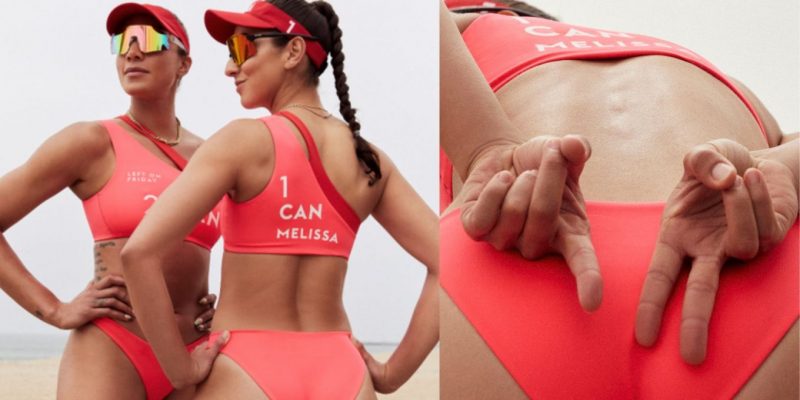Trends
Even in Summer, All-Black Everything Is in Style
The darkest colour is always in.
by : Caitlin Agnew- Jul 19th, 2022
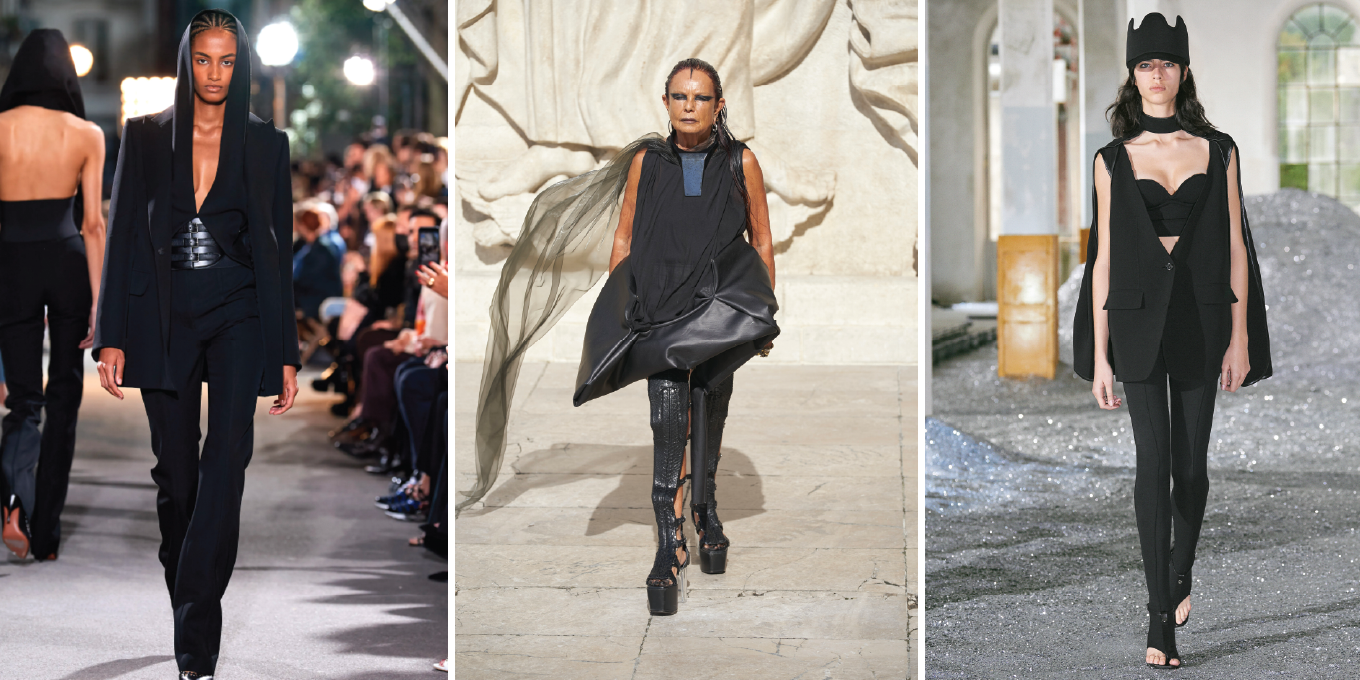
PHOTOGRAPHY COURTESY OF ALAÏA (ALAÏA) & IMAXTREE (RICK OWENS & BURBERRY)
Every clothing choice has something to communicate, and head-to-toe black is no different. A type of psychological armour, it’s often used to convey a sense of austerity or seriousness, perhaps due to the Western convention of black being worn to funerals, its association with intellectual movements like the 1950s Beat Generation or its role as the uniform of choice in no-nonsense New York. In creative industries, an all-black wardrobe is a symbol of success. Take Andy Warhol, who was rarely seen without a black turtleneck, or Karl Lagerfeld, whose black suits became synonymous with his identity. (One notable exception to the rule is Vogue boss Anna Wintour, who has reportedly said she’d never wear an all-black outfit.) All-black everything is also emblematic of certain lifestyles, the most extreme of which is goth, a macabre-obsessed subculture that originated in the 1980s.
Brenda Weischer, a German-born consultant and founder of second-hand designer platform Disruptive Berlin, shares her monochrome style aesthetic with the 124,000 followers of her Instagram account. Her signature palette of either black or white—or both—extends beyond her closet to her Berlin apartment, which has been outfitted in vintage design pieces that include her grandmother’s Wassily chair and a Ligne Roset Togo sofa. In a recent post, she shared her summer-clothing rotation, a mix that includes Prada sunglasses, a Rick Owens top and skirt, a 2002 Dior bag and Balenciaga Crocs—all in black.
Consider these classic pieces: the little black dress, the Le Smoking tuxedo and the motorcycle jacket, all of which literally never go out of style. In the canon of fashion imagery, black clothing has been the subject of endless iconic photographs, like Helmut Newton’s portraits of sexy, powerful women and Peter Lindbergh’s shots of 1990s supermodels outfitted in Alaïa and Versace. In film, black was the colour of choice for some of our favourite complex female characters, like Audrey Hepburn’s Givenchy-clad Holly Golightly in Breakfast at Tiffany’s and Catherine Deneuve’s conflicted housewife, who wore Yves Saint Laurent attire, in Belle de Jour.
On the spring/summer 2022 runways, black was particularly prominent, beginning with Balenciaga’s nearly-all-black collection, which was also an exploration of modesty and included several designs that completely covered the body and in some cases—the face. At Acne Studios, oversized black jackets created a fresh silhouette for fearless wearers. Even London designer Richard Quinn, who is known for his playful mix of eccentric floral prints, embraced an all-black approach. Last fall, Quinn explored themes of BDSM through black-latex-clad models dressed as kittens and puppies. And, of course, Rick Owens, king of the black uniform, presented a shape-shifting futuristic take on fashion, with his wife, Michèle Lamy, opening the show in the darkest of colours.
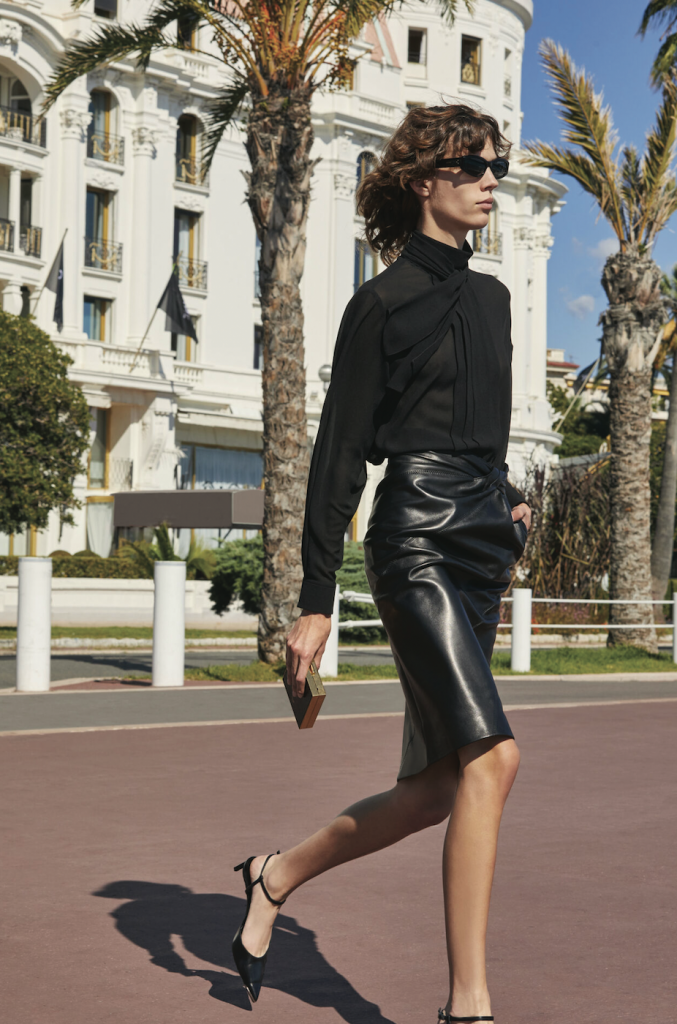 PHOTOGRAPHY, COURTESY OF CELINE (CELINE)
PHOTOGRAPHY, COURTESY OF CELINE (CELINE)Black is casting a chic shadow over red carpets as well. At the Met Gala in May, Burberry’s Riccardo Tisci dressed a coterie of attendees—including Nicki Minaj, Bella Hadid and Naomi Campbell—in black. Also in that colour category at the gala were Kendall Jenner in a billowing Prada gown, Vanessa Hudgens in Moschino, Kate Moss in Burberry and Amy Schumer and Venus Williams in Chloé. At the Academy Awards in March, Best Original Song winner Billie Eilish sported a voluminous black Gucci gown while Kristen Stewart made headlines in a pair of black leg-baring custom Chanel shorts and matching blazer. On the ghastlier end of the spectrum was Julia Fox, who wore a black leather halter gown featuring a skeletal hand that wrapped around her neck—created by Danish designer Han Kjøbenhavn—to the Vanity Fair Oscar Party.
For Eeyou Cree designer Scott Wabano, it was bands like Fall Out Boy and My Chemical Romance that provided an introduction to the colour black during his adolescence. “There’s just something so sophisticated and intriguing about the colour black—it can represent so many different things,” they say, pointing to death and mystery and also black’s place on the medicine wheel, where it represents the emotional self. When exploring the dark side during the summer months, says Wabano, it’s important to have a thorough understanding of textiles, which can make or break an all-black look under the sun. “I always aim for lighter fabrics,” they say, highlighting options like mesh and tulle. “They’re very flowy, and the air can move through them; they don’t suffocate your body.”
Canadian fashion label Markoo is known for its contemporary take on the all-black aesthetic. “What attracts us to designing with black is that it’s powerful and has a sense of drama,” says Tania Martins, who runs the Toronto-based label with Mona Koochek. “We keep going back to it because it has authority and sophistication.” When designing for warmer weather, says Martins, they play with cuts that show a little more skin and looser silhouettes that allow the wearer to feel both sexy and comfortable. “I love wearing black because there’s always a sense of dark mystery, elegance and strength in it.”
Perhaps Yohji Yamamoto, the legendary Japanese designer who has a loyal army of followers dressed in black, put it best when he said: “Black is modest and arrogant at the same time. Black is lazy and easy—but mysterious. But above all, black says this: I don’t bother you—don’t bother me.”
Read more:
Let’s Go Back to School: Preppy Fashion Is in Style Again
Are NFTs the Future of Fashion?
Is Being Understated the Newest Fashion Trend?
Newsletter
Join our mailing list for the latest and biggest in fashion trends, beauty, culture and celebrity.
More from Trends
Read Next

Culture
Introducing 2024’s Most Innovative Products, Voted on By Canadians
*Adds to cart*
by : ELLE Canada- May 1st, 2024

Fashion
5 Summer Wedding Guest Outfits We’re In Love With
From country western cool to beachy barefoot elegance, you'll be dressed to the nines all season long.
by : Alison McGill- May 1st, 2024
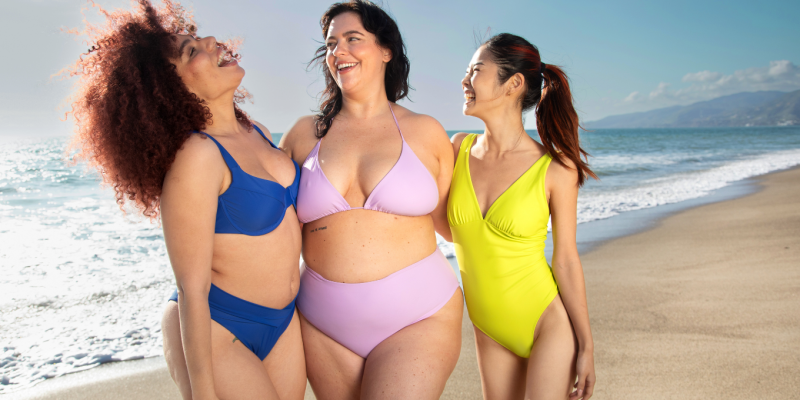
Beauty
Summer Prep: How to Feel Confident in Your Swimsuit
New Size-Inclusive Swimwear: Gillette Venus partners with The Saltwater Collective to Launch a Collection for Any Body
by : ELLE Canada- Apr 24th, 2024


